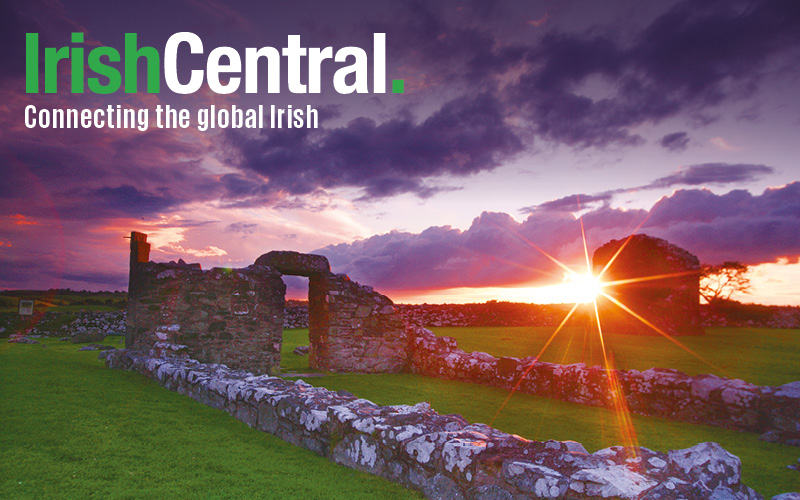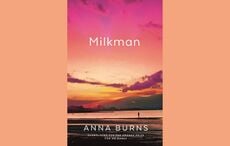Ireland is the spiritual home of whiskey. And the literal one. As such, it stands distinct from its Scottish cousin, whisky.
The story of whiskey and whisky is an ancient one.
And it has a lot more to it than the distinction caused by the letter “e.”
One aspect of the story has to do with numbers.
Scotch Whisky boasts an enormous number of individual brands, “several thousand” according to the Scotch Whisky Association.
Irish Whiskey– not so many.
But the Irish are lately making a charge.
There are various reasons as to why there are literally thousands of Scotch labels and only dozens of Irish.
One popular story is that when the Scots began to seriously produce whisky for a market beyond their own home, this in the middle of the 19th century, the Irish were in no position to do the same for a number of reasons, political, economic and religious, the last of these resulting in significant part from the emergence of the Catholic temperance movement at a time when the church held enormous sway in all aspects of Irish life.
Regardless of the precise reason, or reasons, the canny Scots were off the mark at a far more rapid clip than their Irish neighbors.
But that was then and this is now.
And while Scotch still leads by the proverbial mile in terms of brand labels, the choice for Irish Whiskey lovers is expanding – seemingly by the week.
And in recent weeks, with Christmas approaching fast, this has been especially evident.
Also evident has been the emerging concept of “spirits tourism,” a variation on something beer and wine enthusiasts are long familiar with.
Tourism implies movement, so with regard to the Irish Whiskey version of spirits tourism it makes sense that a sufficient number of brands are on offer in a sufficient number of locations.
Irish Whiskey brands – including long familiar and world famous brands such as Bushmills and Jameson – have been busy coming up with new variations on their brands.
Bushmills, Jameson, Powers, Paddy, Tullamore Dew, Redbreast and Midleton are, as they say in Ireland, “old familiars.”
But coming into view in recent times have been whiskies such as “The Sexton,” “The Temple Bar, “Dingle” and “Slane Irish Whiskey.”
Slane Irish Whiskey Distillery and Visitor Experience, which opened its doors a few weeks ago, is to be found on the Slane Castle Estate in County Meath.
Music fans will recall that Slane Castle has hosted some of the world’s biggest rock music acts, including The Rolling Stones, Bruce Springsteen, U2, Bon Jovi and the Foo Fighters.
Now it’s hosting whiskey tasters as a result of a partnership between Louisville, Kentucky-based Brown-Forman, which has been in the whiskey business since 1870, and the Conyngham family, which has farming roots in Slane village dating back three centuries.
“The Boyne Valley was an important center for Irish whiskey production in the 18th and 19th centuries, when Irish whiskey was the most popular aged spirit category in the world,” said Alex Conyngham, co-founder of Slane Irish Whiskey.
“With the opening of Slane Distillery, we aim to restore this legacy for future generations by combining the best of traditional Irish whiskey craftsmanship with progressive process innovation,” he added.
“The new distillery at Slane is the first that Brown-Forman has constructed outside of the U.S. and we believe it will set a new benchmark for quality and flavor, as well as boost spirits tourism,” said John Hayes, Chief Marketing Officer of Brown-Forman Brands.
“The Conyngham family long had the dream of producing whiskey at their ancestral home and we are proud to have made that dream come true together.”
Brown-Forman has quite a stable of brands itself, Jack Daniel’s being one of them.
According to a release, construction of the new distillery began in September 2015 and centered on the restoration of the 1,500-acre estate’s 18th century horse stables and courtyards. These were converted into a distillery and visitor experience. Whiskey production began only in recent weeks.
Of course, the language of promoting alcoholic beverages is, well, a dialect all its own.
Learning to speak wine would be right up there with, well, Mandarin.
But the pitch for Slane Whiskey is comparatively simple and straightforward.

Slane Irish whiskey
It’s a “bold, new take on Ireland’s legendary spirit,” said the release before adding: “Slane Irish Whiskey marries traditional Irish craftsmanship with innovations like its signature Triple Casked maturation process.
“Using virgin, seasoned and sherry casks, the resulting spirit is bold, yet smooth and more robust and complex than a traditional blended Irish whiskey. Its striking black bottle calls out its distinctive flavor and unconventional approach that embodies the pride of Slane.”
“Alex was introduced to Irish whiskey by his father and grandfather who enjoyed savoring it. He began his own career in Irish whiskey in 2000 in Australia where he worked as a brand ambassador for Jameson. There, on the opposite side of the globe, he saw the international potential of Ireland’s legendary spirit. Alex later became a founding member of the Irish Whiskey Association, which is represented by an umbrella group, the Alcohol Beverage Federation of Ireland.
The IWA works to spread the word about Irish Whiskey, word about the old familiars and the new not so familiars.
Newish and becoming more familiar would be Dingle Whiskey, which was launched in November of last year and is following up with the releasing of what is being described as “new small batches.”
That would be a limited supply of bottles.
In the case of Dingle Single Malt Whiskey Batch No. 2, that would be 6,000 bottles.

Dingle whiskey
Dingle Pot Still Whiskey musters only 800 bottles, Dingle Single Malt, approximately 700 bottles, while Dingle Cask Strength Whiskey Batch No. 2, is an instant rarity at just 500 bottles.
“These new releases show an incredibly interesting opportunity for us. It is the first time we have been able to showcase multiple whiskies showing different flavors amongst each of the releases,” said Elliot Hughes of The Dingle Distillery.
“Every new release of Dingle Whiskey is exciting, but the Pot Still release is particularly momentous. It is an historic occasion for Dingle, the Distillery and Irish whiskey distilling as it makes Dingle Distillery just the second distillery on the island of Ireland to produce Pot Still.”
While Dingle represents Kerry in the emerging Whiskey brand phenomenon, the aforementioned “The Sexton” originates from the other end of Ireland, the northern reaches of County Antrim – Bushmills country.
The Sexton doesn’t invoke geographic location in its name.
But it presents itself in a somewhat atypical bottle, one that looks more like something Captain Jack Sparrow might be waving about in a “Pirates of the Caribbean” scene than a more traditional Irish whiskey bottle.
The bottle tells you it’s a single malt Irish Whiskey and also carries in very small lettering the Irish word “dubh,” meaning black.
Which suggests the possibility of a future “dearg,” or red.
“The Sexton is an unexpected modern-day Irish single malt for the everyman,” states its advertising pitch.
Women, presumably, are allowed sample what is “made from 100 percent Irish malted barley” and is “triple distilled in copper pot stills and aged in former Oloroso sherry casks.”
Be it copper pots and casks once used for sherry or stout, the ingredient most touted in all the brands, old and new, is barley, Irish barley.
If The Sexton is not alone in presenting itself in a context other than geographic location the same can’t be said of “The Temple Bar,” a whiskey that was highlighted recently in our sister publication, the Irish Echo, and is a brand that takes form in a Dublin hostelry of the same name, and in a Dublin district of the same name.
The Temple Bar hostelry has been around for a long time and its neighborhood is one of the oldest in what is an old city.
But the whiskey is being newly pitched to the brand-hungry market, not least the United States.

Temple Bar whiskey
Mention was made of Bushmills. If Bud claims to be the king of beers, Bushmills can point to a royal charter dating back to 1608.
Once upon a time, and a time far more recent than 1608, there was Bushmills and Black Bush.
Now there is Red Bush, and also three additional Bushmills single malt variations aged 10, 16 and 21 years.
This kind of product line diversification has been around for some time, but lately another example of product diversification has taken hold in whiskey world: and that would be recipes.
“With the surge in Irish Whiskey and the recent trend in hot drinks, Bushmills Irish Whiskey has developed a partnership to perfect the Irish coffee,” said a recent sales pitch.
Now actually perfecting Irish coffee would be right up there with, well, splitting the atom.
Perfect Irish coffee, unlike science however, would always have a subjective element.

Bushmills red labels
Still, Bushmills has a persuasive track record and has teamed up with an “award-winning coffee roastery in Belfast called Root & Branch to deliver an original Bushmills coffee blend for a high-quality foundation for the classic Irish cocktail.”
The coffee beans are from Brazil by the by, so we have Bushmills/Belfast/Brazil Irish coffee.
The “Triple B.”
And wait for it, the beans are seasoned in former Bushmills casks.
According to a release, “the Bushmills x Root & Branch coffee and Bushmills Irish Whiskey pack is available for purchase on ReserveBar.com with a suggested retail price of $49.99.”
The Triple B might give Egg Nog a run for its money this Christmas.
But no matter what you spend your hard earned money on, please imbibe sensibly.
To subscribe to the Irish Echo e-paper, click here.




Comments